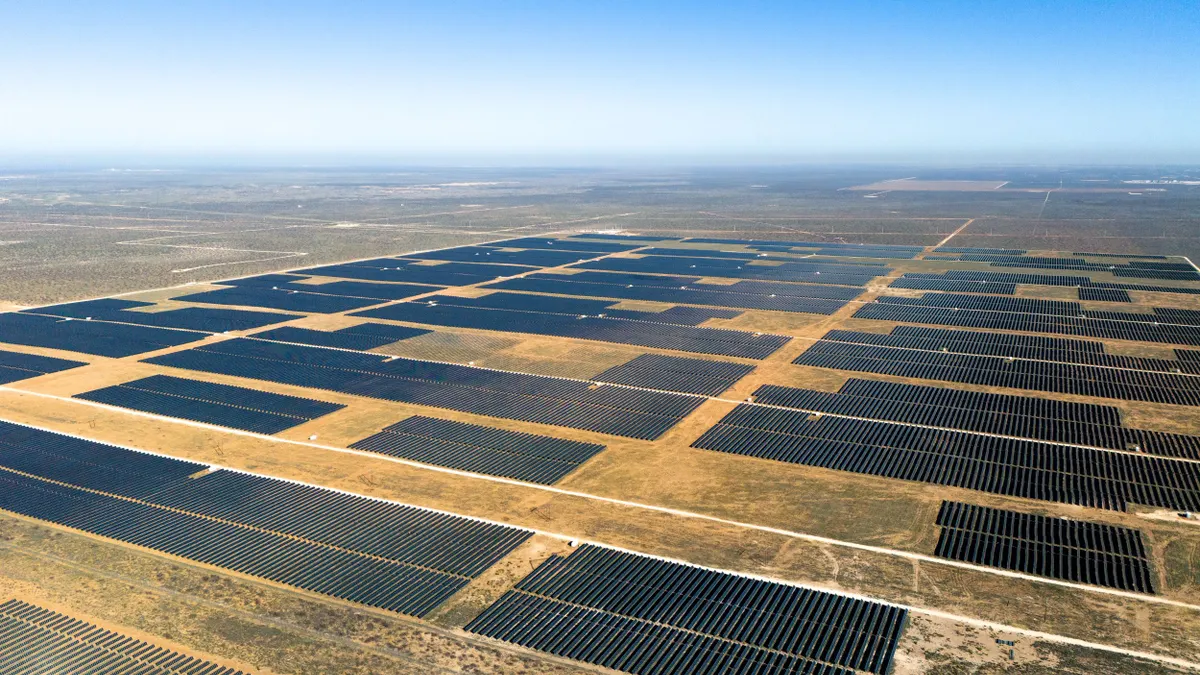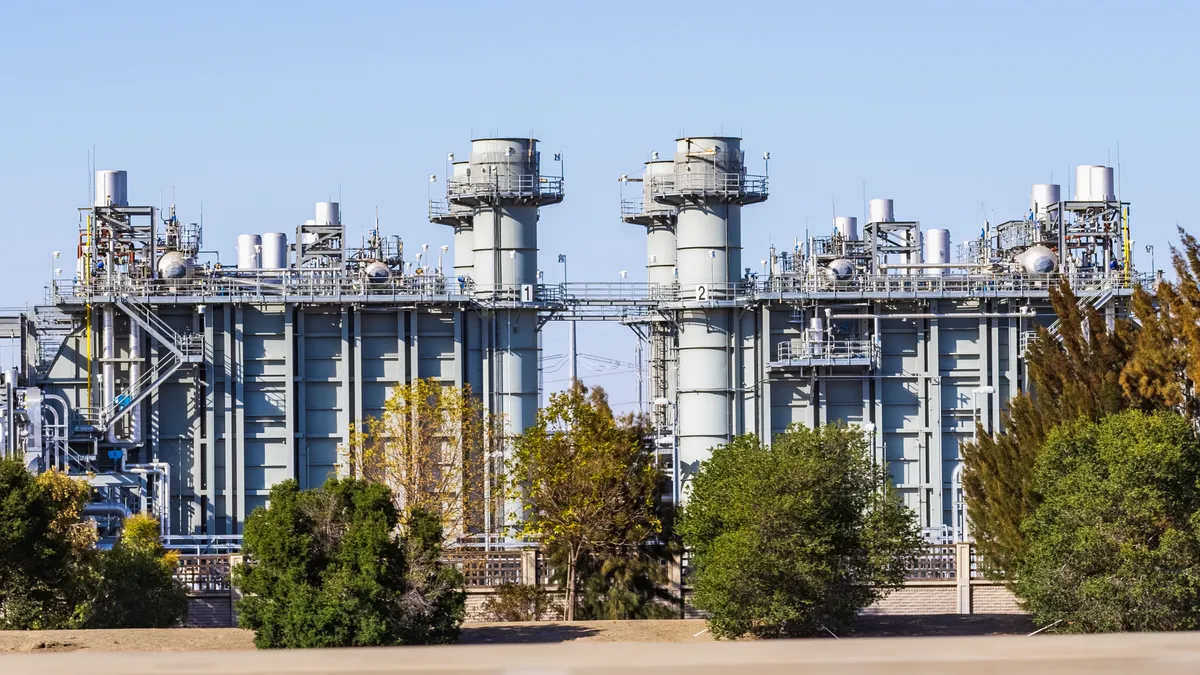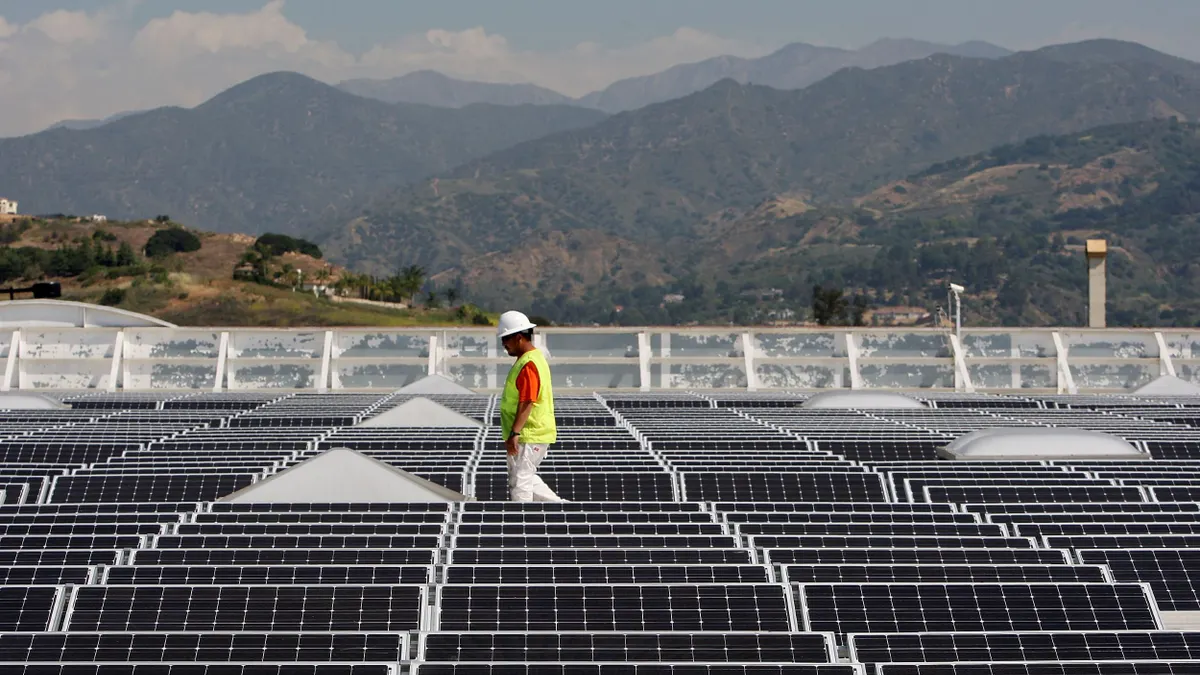Today, we're introducing the Utility Dive Power & Gas Index, a monthly feature highlighting the close relationship of U.S. electricity and gas markets and the impacts on the utility sector. The first edition provides a general overview of the power-gas relationship across the nation, while subsequent updates will focus on specific regions and trends.
It's not lock-step, but by charting the prices of electricity and gas side-by-side makes it simple to visualize just how closely the two are linked. Using data from wholesale trading trading points provided by the U.S. Energy Information Administration, the nation's growing dependence on natural gas is on display, and it highlights the choices states must make in determining their generation mixes.
Since advances in gas production lowered prices earlier this decade, gas generation has surged in the U.S., surpassing coal for the first time in the nation's power mix last year. Today, gas plants often set the pricing in the nation's organized markets. In 2015, for instance, ISO-New England reported that gas set the wholesale power price about 70% of the time.
In some regions, the fuel is tightly correlated to power prices. Brief weather events move fuel and power prices distinctly and in tandem. A two-day December cold snap in New England or PJM is easy to spot, highlighting regions' dependence on gas — and just how little slack is built into the system.
In others regions the fluctuations are more gradual and seasonal, with pricing spikes not necessarily tied to the cost of natural gas.
Wholesale power prices were lower in 2016 than the year before, largely due to low gas prices. According to data from the U.S. Energy Information Administration, in the first 10 months of last year the cost of gas for power generation averaged $2.78/MMBtu — 17% lower than 2015.
Customers also got a break from milder weather in 2016, compared to the icy winters of 2014-15. ISO New England power prices in February 2016 averaged $34/MWh -- a quarter the price a year before. But now, gas prices are beginning to rise. That will send power prices higher as well, though it may be mitigated as generators turn to coal.
While natural gas has been winning the war, coal is still expected to be the dominant generation source this winter. Gas prices have dropped so low in the last year that some generators actually switched away from coal -- a dynamic not often seen outside shoulder months. But that left some generators with coal in storage, and as gas prices rise not only will the switching seen last year come to an end but other demand will be met by coal as well.
EIA expects coal will generate more energy than gas through April, before reversing course again.
The liquid Henry Hub gas trading point in Louisiana is often used as a proxy for gas prices, and EIA says it expects prices will rise there due to increased drilling levels, expansion into less prolific and more costly areas, and rising demand from both petrochemical and liquefied natural gas export facilities.
Coal production is expected to increase for the next few years, before beginning a sustained decline. Gas prices keep production up through 2020, but will then begin a sustained two-decades slide.
Midwest
The Midwest ISO has just shy of 143 GW of available supply to meet the winter demand, which is expected to peak at 104 GW. That should leave plenty of slack in the system, but the grid operator has planned for the worst.
In an extreme case, where demand spikes alongside outages, the region is 1.3 GW away from needing emergency resources. Should the need arise, the operator says it has "emergency procedures already in place to effectively manage through the extreme scenario."
The region is less gas-dependent than some, with more than half its typical winter generation coming from coal, and about 15% from gas, according to latest numbers. That results in a power and gas index where gas prices have an impact, but are not as significant as weather events in determining power price spikes:
Texas
That late-year spike in gas demand and power prices resulted from the Texas grid hitting a new record for winter demand, spiking to 57,958 MW during a particularly cold stretch. But the Electric Reliability Council of Texas also said the cold front brought increased additional wind into the territory, helping set a new record for "instantaneous wind generation output."
Gas as a portion of Texas generation has been rising steadily since the beginning of the decade. In 2010, natural gas was about 38% of ERCOT's mix; in 2015, it was 48%. During that same stretch, wind generation rose from about 8% to 12% of the grid's portfolio, while coal and nuclear both declined.
More recently wind generation was serving 14.7% of demand.
But wind's variable nature means at times production peaks alongside demand. On a day in November, for instance, wind generation in ERCOT topped 15,000 MW — and met about 45% of power demand at the time.
The absence of a capacity market in Texas means power prices can spike more than in other regions during high demand events, but gas prices also have an influence:
New England
New England is the clearest example of gas and power prices tracking. The fuel is often on the margin, and because the region's pipes are constrained prices react quickly.
Take, for example, the significant spike at the end of the chart below. On Dec. 13 in Boston, the low temperature was 35 —not too shabby — but on the 16th temperatures snapped down to just 4 degrees. Two days later, back above freezing.
The grid operator says it expects to meet electricity demand this winter, but in its recent winter outlook warned "Possible natural gas pipeline constraints during extended cold snaps could limit electricity production."
New England has 3,450 MW of generation "at risk of not being able to get fuel when pipelines are constrained." And that amount will increase in future years, as more coal, oil and nuclear plants retire and are replaced with gas.
PJM
PJM is forecasting peak load of 135,500 MW this winter, and it has installed capacity of about 183,600 MW; gas makes up about a third of the grid operator's generation.
Two winters ago PJM fell victim to the Polar vortex, when extreme cold weather spiked demand and crippled power plants. At one point, about 20% of the grid's generation was offline. That's led the operator to enact more stringent capacity requirements, and this is the first year those will be in effect.
The "vast majority of pipelines are well prepared for winter," PJM told federal regulators. Even so, recent demand events have spiked both natural gas and power prices in the region:
California
California is expecting a mild winter, which would be a help to customers in the southern part of the state who have been impacted by the Aliso Canyon gas leak. Discovered in 2015, it left the facility at just a fraction of its capacity, sending the state scrambling to install battery storage projects in some areas.
Gas shortages due to the leak will affect dozens of plants, but the system has full transfer capability and there no reductions on major paths. A new 500 kV line is also boosting transfer capability into the L.A. Basin.
All told, the leak directly impacts 17 gas-fired plants generating about 9,800 MW, but there are also broader implications for 48 plants generating more than 20,000 MW, the Cal-ISO told FERC.
Also at California's disposal is its access to the Western Energy Imbalance Market, allowing it to trade power with PacifiCorp, Puget Sound Energy, Arizona Public Service, and NV Energy. The state has two sets of power and gas trading hubs.
Southwest
In the Southwest, gas is a much smaller chunk of generation: about 15% in the Southwest Power Pool. Coal is more than 60%, and wind power makes up about 15%.
The region's Market Working Group has been discussing of using a multi-day market to address coal units which are rarely dispatched by the RTO, due to their longer start-up times.
Like ERCOT, SPP lacks a capacity market which can play into power price spikes during times of high demand in the summer:
Northwest
The Northwest Power Pool predicted coincidental winter peak forecast of 68,000 MW this winter, 4.9% greater than last winter. But its winter assessment indicates its expects to have a margin of about 20%.
Installed capacity in NPP is about 115,000 MW, including approximately 16,700 MW of variable resources. Due to the region's reliance on hydro resources — about 60% of the mix — overall deliverable capacity over a sustained period is dependent upon the availability of water.
The biggest risk in the region is a "significant weather event" that would last over a five-day period and drop temperatures 20 degrees below normal.
"This type of an event would increase the overall Power Pool load by 6,000 MW. Any additional contingency during such a weather event could cause loss of local load," NPP wrote.






















